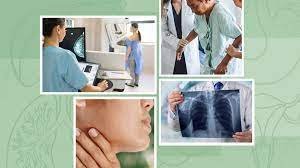Cancer has emerged as a significant health concern within the Asian American population. The cultural, genetic, and lifestyle diversity among Asian Americans contributes to the varying prevalence rates of different cancers within this community. Understanding these factors is crucial for effective cancer prevention and management.
Lung Cancer: A Silent Threat
Lung cancer is a leading cause of cancer-related deaths among Asian Americans. High rates of smoking, exposure to environmental pollutants, and genetic susceptibility contribute to this alarming trend. Educating the community about the dangers of smoking and the importance of clean air is essential to reduce the impact of lung cancer.
Liver Cancer: The Alarming Rise
Liver cancer is disproportionately prevalent among Asian Americans, often linked to chronic viral hepatitis infections. Regular screenings, especially for individuals with a family history of liver disease, can aid in early detection. Additionally, promoting hepatitis B vaccination can significantly reduce the risk of developing liver cancer.
Stomach Cancer: The Silent Killer
Stomach cancer is more common in some Asian countries, and this prevalence carries over to Asian American communities. Dietary habits, such as the consumption of preserved and salted foods, are believed to play a role. Encouraging a balanced diet rich in fruits and vegetables, along with regular check-ups, is vital.
Thyroid Cancer: Gender Disparities
Thyroid cancer is more prevalent among Asian American women. While genetics may contribute, the exact reasons for this gender disparity are still under investigation. Raising awareness about the importance of thyroid health and regular screenings can aid in early diagnosis and effective treatment.
Colorectal Cancer: A Preventable Enemy
Colorectal cancer is often preventable through lifestyle modifications and routine screenings. Encouraging a diet high in fiber, along with regular exercise, can significantly reduce the risk. Outreach programs promoting the importance of colonoscopies can also lead to early detection and improved outcomes.
Nasopharyngeal Cancer: Understanding the Rarity
Nasopharyngeal cancer is relatively rare, but it has a higher incidence among certain Asian populations. Epstein-Barr virus infection and genetic factors may contribute to its development. Regular check-ups and early symptom recognition can improve survival rates.
The Importance of Cultural Sensitivity in Cancer Care
Cultural nuances influence how Asian Americans perceive and seek medical care. Providing culturally sensitive healthcare services can bridge gaps in understanding and promote trust between patients and healthcare providers. This is crucial for encouraging regular screenings and adherence to treatment plans.
Genetic Predisposition and Environmental Factors
Genetic predisposition, combined with environmental factors, contributes to the varying cancer rates among Asian American subgroups. Understanding these factors can help tailor screening and prevention strategies to specific communities, improving overall health outcomes.
Breaking the Silence: Encouraging Regular Screenings
Breaking the stigma surrounding cancer discussions is vital. By openly discussing the importance of cancer screenings, individuals are more likely to prioritize their health. Creating community-based campaigns and utilizing accessible language can empower Asian Americans to take charge of their well-being.
The Role of Diet and Lifestyle Choices
Diet and lifestyle play a significant role in cancer prevention. Traditional Asian diets, rich in vegetables and whole grains, offer protective benefits. Encouraging the retention of these dietary practices while minimizing processed foods and sugary drinks can contribute to reducing cancer risk.
Access to Healthcare: Bridging the Gap
Limited access to healthcare remains a challenge for some Asian Americans. Language barriers and lack of insurance coverage can hinder timely diagnosis and treatment. Collaborative efforts between healthcare institutions and community organizations can improve access and ensure equal care for all.
Raising Awareness and Fighting Stigma
Raising awareness about cancer and debunking misconceptions can lead to early interventions. Community seminars, social media campaigns, and partnerships with influential figures can help dispel myths and encourage proactive healthcare-seeking behavior.
Empowering the Asian American Community
Empowering the Asian American community involves fostering a sense of ownership over their health. Through education, advocacy, and support networks, individuals can navigate the complexities of cancer prevention, diagnosis, and treatment with confidence.
Conclusion
The impact of cancer on Asian Americans is profound, influenced by a blend of genetic, cultural, and lifestyle factors. By addressing these factors head-on and promoting regular screenings, awareness, and education, we can work towards reducing the burden of cancer within the Asian American community.








